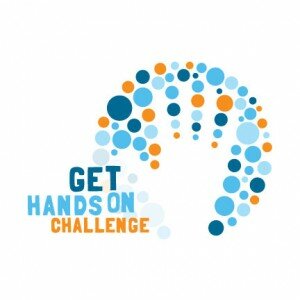Lessons from KaBOOM!
 by Jessica Kirkwood, Vice President for Social Media, HandsOn Network
by Jessica Kirkwood, Vice President for Social Media, HandsOn Network
On my flight from Atlanta to New York for the National Conference on Volunteering and Service, I made the good decision to read ‘Breaking New Ground: Using the Internet to Scale‘, a case study of KaBOOM! written by The Monitor Institute.

The report highlights the ways KaBOOM! has been experimenting with online tools to put their model approach to playground design and building in the hands on interested communities everywhere.
KaBOOM! believed giving away their model might be the fastest, most efficient way to create more places to play in more neighborhoods and communities faster.
As a result, KaBOOM! launched a new “playday” planning tool that anyone, anywhere can use to lead a community driven playground design and build project. You can check it out here: http://playday.kaboom.org/projects/16-ryan-playground-park
 The report, (which Heather McLeod Grant and Katherine Fulton have made eminently readable) outlines some of the key lessons KaBOOM! has learned since their experimentation online began.
The report, (which Heather McLeod Grant and Katherine Fulton have made eminently readable) outlines some of the key lessons KaBOOM! has learned since their experimentation online began.
Because KaBOOM! playground builds are, at their core, community driven, well-organized volunteer projects, the lessons learned are both relevant and useful for HandsOn Network.
The topline lessons discussed in the report include:
1.) Keep it simple and concrete
KaBOOM! realized the easier they could make it for people to understand their model, the more easily it could train others and equip them to lead a playground build in their community on their own.
2.) Treat your online strategy as mission-critical
Interestingly, KaBOOM!’s online strategies don’t exist to support its other programs; they are, themselves, a key strategy for achieving the mission.
3.) Build your own technical competency
Overtime, KaBOOM! learned that it was less expensive, more efficient and more effective to hire and keep developers on staff.
Ultimately, they were more familiar with the impact the organization could have and were able to make changes quickly, get them right the first time and produce online results that fit the organization’s culture and brand.
4.) Nurture your online community via its leaders
 KaBOOM! learned that it needed to provide ‘high touch’ support to online volunteer leaders who took on the task of planning a local playground build.
KaBOOM! learned that it needed to provide ‘high touch’ support to online volunteer leaders who took on the task of planning a local playground build.
“Raising money, recruiting volunteers, and planning a playground build is a huge undertaking.”
A full-time KaBOOM! staff member supports the online project leaders in the same way a volunteer manager would support more traditional volunteer leaders.
5.) Create incentives for action
KaBOOM! found that self-mobilization is a high hurdle to ask online supporters to jump and so the organization finds itself increasingly focused on delivering both soft and hard incentives to reward self-organizers.
 Specifically, KaBOOM! is developing an online, points-based recognition program for active volunteers and they’ve discovered that the chance of winning even a relatively small financial grant for a playground project can serve as a significant incentive.
Specifically, KaBOOM! is developing an online, points-based recognition program for active volunteers and they’ve discovered that the chance of winning even a relatively small financial grant for a playground project can serve as a significant incentive.
6.) Give up credit to increase your impact
KaBOOM! offers it’s online tools for community based playground design and build projects at no charge. They’re focused on their larger objective – the number of safe places to play – and not where and when their brand shows up.
7.) Care more about real-world outcomes than online metrics
While KaBOOM! tracks a great deal of statistics about their website, the number of real-world playgrounds that are built by people using its tools to organize themselves – an the impact of these playgrounds on the local children and communities – is what really matters to them.
I spoke to Jim Hunn, Vice President of Mass Action at KaBOOM! about the report as well as KaBOOM!’s web site and I was intrigued.
Take a look at the playday planner site and the way that the user checks off activities once they are completed.
Jim told me that the first version of their playday site asked users to follow KaBOOM!’s playground build model in a linear fashion – in the order KaBOOM! laid out the steps.
(Photo by via .)
What they learned was that they had to let go of their model a bit.
They discovered that users wanted to see all the steps in an overview and execute them in the order that made the most sense for their particular project and community.
 Like KaBOOM!, HandsOn Network cares about increasing the number of people volunteering in the world.
Like KaBOOM!, HandsOn Network cares about increasing the number of people volunteering in the world.
We believe that service offers a solution to many of our most critical social challenges and that every person can discover their power to make a difference, creating healthy communities and vibrant democracies around the world.
Increasingly, we too are putting self-organizing tools directly in individuals hands and hoping to achieve greater impact in the world by inspiring, equipping and mobilizing people to be the leaders they’ve be waiting for.
I’m grateful to KaBOOM! and The Monitor Institute for sharing their lessons in such an open and transparent way so that we can benefit from the path they’ve already traveled as we move forward.
Thanks, KaBOOM!



One Comments to “Lessons from KaBOOM!”